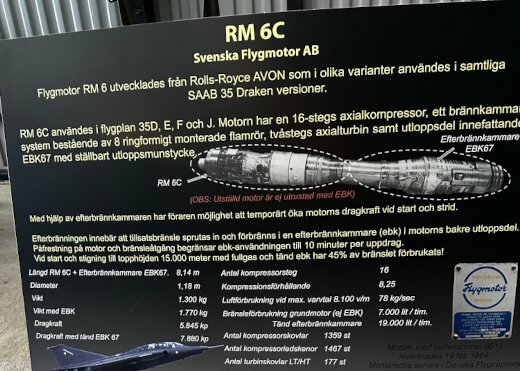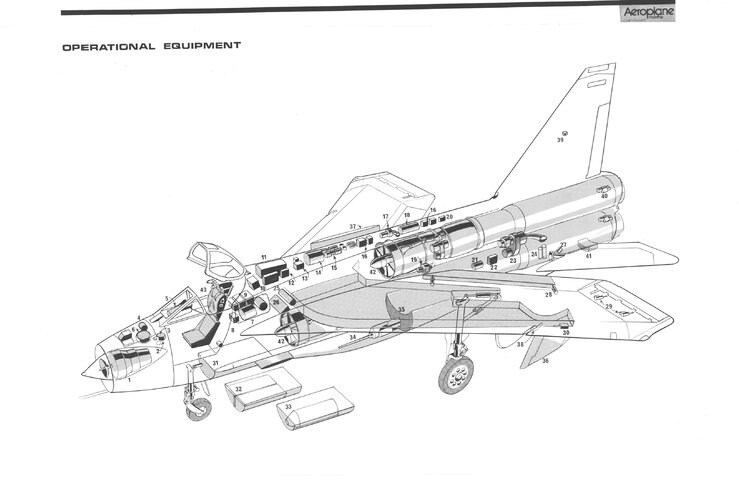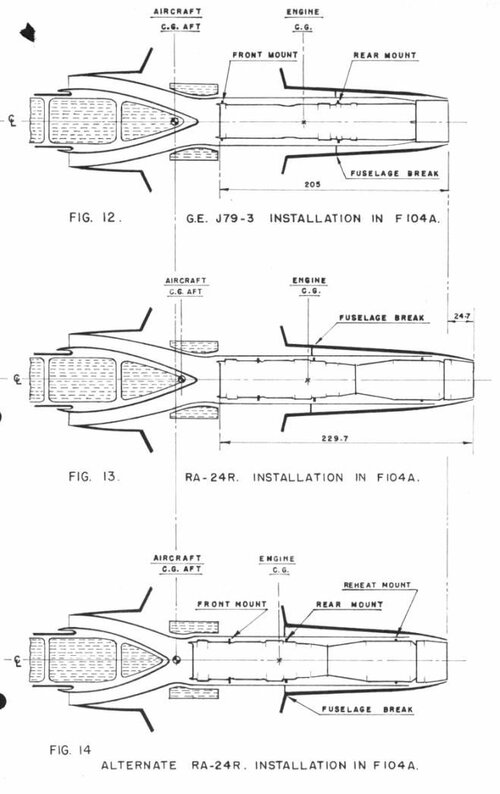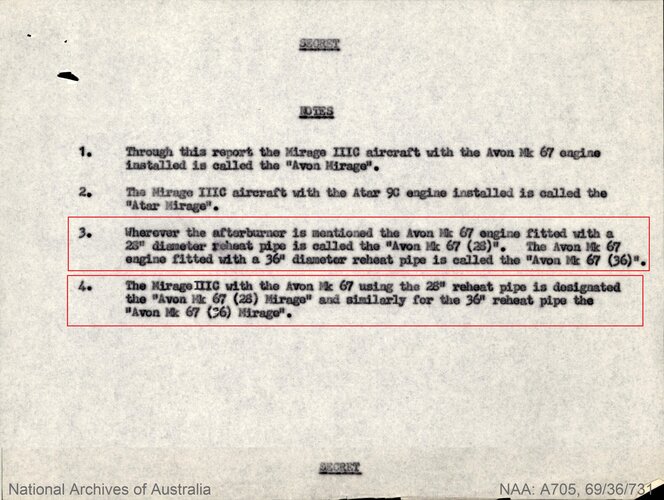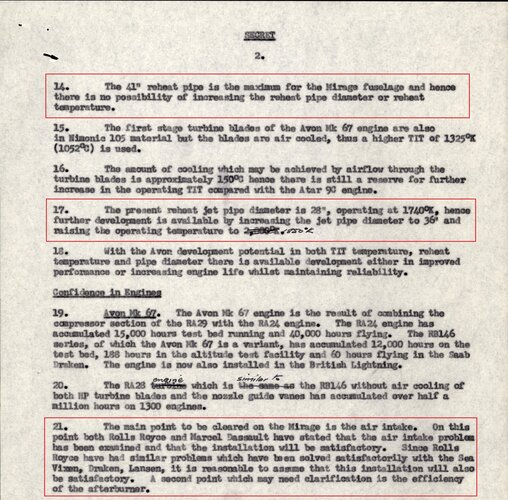Also here's a nice compilation of RM6 data from various sources here:
BASIC CHARACTERISTICS OF RM6 ENGINES
| Version | - | RM6A | RM6B | RM6C | RM6C | RM6C |
| Maximum thrust | kN | 47.46 | 46.58 | 58.35 | 54.92 | 55.4 |
| Thrust with afterburner | kN | 63.94 | 62.17 | 76.05 | 75.51 | 76 |
| Total compression after the compressor | - | | | | 8.25 | |
| Maximum speed | min -1 | 8000 | 8000 | 8100 | 8100 | |
| Air flow rate | kg.s -1 | 70.5 | 70.5 | 78 | 78 | |
| Diameter | mm | | 920 | | | 1118 |
| Length | mm | | 3552 | | | |
| Length with afterburner | mm | | 8046 | | | 8140 |
| Weight | kg | | 1350 | | | |
| Weight with afterburner | kg | 1675 | 1720 | 1770 | 1900 | 1770 |
| Source | - | [volvo] | [volvo]
[robot museum] | [volvo] | [angelholm] | [aerofax] |
RM6B dry thrust is given as 46.58 kN or 50.01 kN.
RM6B thrust with afterburner is given as 62.17 kN or 67.56 kN.
RM6C dry thrust is given as 54.92 kN [angelholm] to 58.35 kN [volvo] (a difference of over 6%). The source [manual] gives 56.49 kN.
RM6C thrust with afterburner is given as 74.73 kN [flight] to 77.28 kN [volvo] (a difference of over 3%). The source [manual] gives 76.73 kN.
The specific consumption of the RM6C is apparently close to the values of 95 and 189 kg/kN/hr
RM6B OPERATING LIMITATIONS [flight manual]
| Regime | Mission time limit | Speed | Outlet gas temperature |
| Maximum dry thrust or reheat | 10 minutes | 100-98% (1) | 750°C (2) |
| Climb (with/without pre-flight) | 30 minutes | 97.5-95.5% | 720°C |
| Maximum continuous | | up to 95% | 680°C |
| Idling in flight | | 56 +2.5% | 525°C |
| Idling on the ground | | 32 +2% (3) | 650°C |
(1) Speeds above 100% should, if possible, be reduced to 100% or lower by moving the POM.
(2) During afterburner ignition, the temperature can rise to 800°C
(3) When the engine is cold, the maximum speed is 37%.
RM6C OPERATING LIMITATIONS [flight manual]
| Regime | Mission time limit | Speed | Outlet gas temperature |
| Maximum dry thrust or reheat | 25% of flight time, but no more than 15 minutes | 100.5-101.5% | max 770°C, min 600°C tensile |
| Climb | 75% of flight time, but no more than 45 minutes | max 97.5% | max 730°C |
| Maximum continuous | | up to 95% | max 700°C |
| Idling in flight | | 65-67.5% | max 525°C |
| Idling on the ground | | 36-42% (cold engine max 45%) | max 700°C |
During engine acceleration and afterburner activation, the temperature can briefly reach 800°C.
During climb, the speed can increase to a maximum of 104% (at altitudes above 13 km).
During takeoff at high ambient temperatures, the maximum speed is reduced to 96%.
During fast flight at low altitudes, the maximum speed is reduced to 97.5%.

